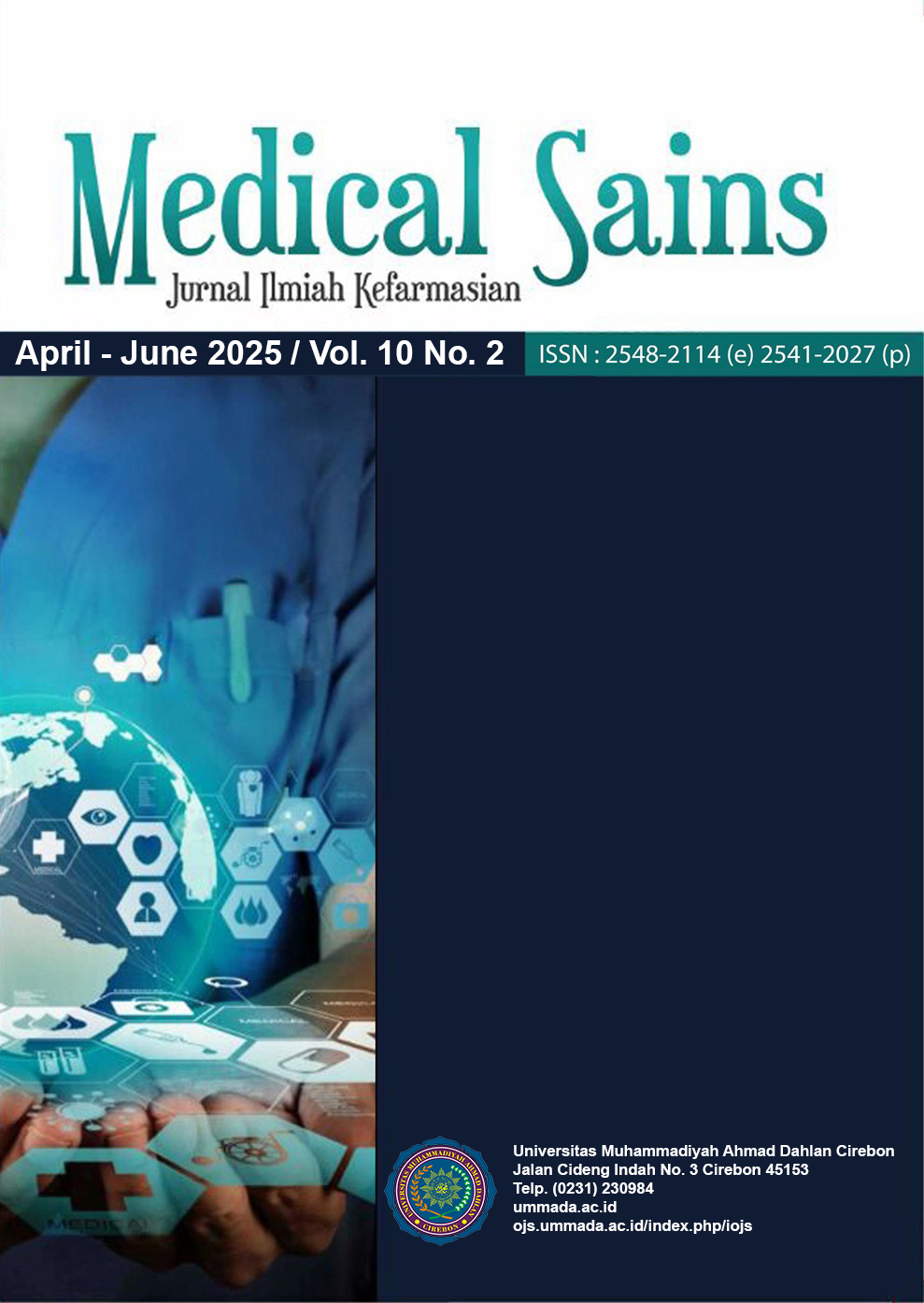SYNTHESIS OF DIHYDROPYRIMIDINONE DERIVATIVES AND CYTOTOXIC ACTIVITY TEST AGAINST T47D CANCER CELLS
Main Article Content
Abstract
Dihydropyrimidinone (DHPM) derivatives are heterocyclic compounds known for a variety of biological activities including anticancer properties. The Mitsunobu reaction was used in this study to synthesize a new DHPM derivative, ethyl 4-(4-isopropoxy-3,5-dimethylphenyl)-6-methyl-2-oxo-1,2,3,4-tetrahydropyrimidine-5-carboxylate (compound B2), and assess its cytotoxic activity against T47D breast cancer cells. Compound B2 was synthesized from ethyl 4-(4-hydroxy-3,5-dimethylphenyl)-6-methyl-2-oxo-1,2,3,4-tetrahydropyrimidine-5-carboxylate (compound M1) using multicomponent reactions (MCR) and the Mitsunobu reaction with isopropyl alcohol as the pronucleophile. Compound B2 was characterized using melting point test, FTIR and LC-MS spectroscopy, which confirmed its structure, functional groups, and molecular weight of 334.13 g/mol. MTT assay was used to evaluate cytotoxic activity. Compound B2 had an IC50 value of 205.71 µg/mL, indicating weak cytotoxicity, whereas doxorubicin had an IC50 value of 3.33 µg/mL. Despite the low cytotoxicity of compound B2, this synthesis sheds light on the development of DHPM derivatives with potential anticancer properties. The results showed that the Mitsunobu reaction is useful for modifying DHPM derivatives and highlights the need for further optimization to improve cytotoxic potency.
Keywords: Dihydropyrimidinone, Mitsunobu, Cytotoxicity, T47D
Article Details

This work is licensed under a Creative Commons Attribution-NonCommercial-ShareAlike 4.0 International License.
Copyright Notice
 The author whose manuscript was published agreed to the following provisions:
- The publication right of all journal material published / released on the E-Journal website of the Medical Science Journal: The Pharmaceutical Scientific Journal is held by the editorial board with the author's knowledge (the moral rights remain the manuscript's author).
- Formal legal provisions for access to digital articles in electronic journals are subject to Creative Commons Attribution-ShareAlike (CC BY-SA) license terms, which means Medical Science Journal: Pharmaceutical Scientific Journal has the right to store, transfer media / format, manage in the form of database (database), maintain, and publish articles without asking permission from the author as long as they include the author's name as the copyright owner.
- Manuscripts that are published / released in print and electronically are open access for educational, research and library purposes. In addition to these objectives, the editorial board is not responsible for violations of copyright law.
Â
This work is licensed under a Creative Commons Attribution-NonCommercial-ShareAlike 4.0 International License.

 Â
 